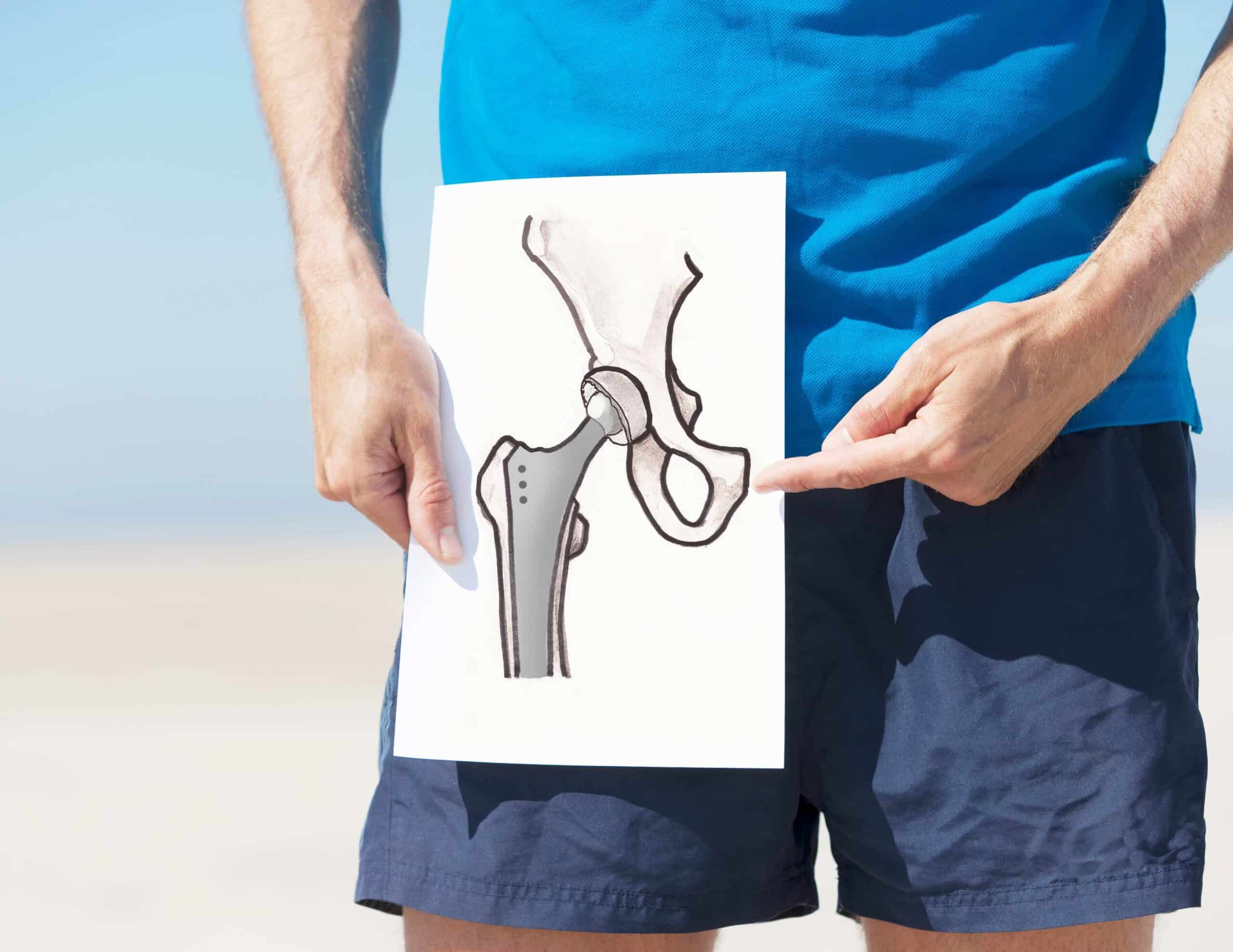Publié le 25 December 2024
Can a total hip replacement move ?
A total hip replacement (THR) consists of various components. First, the metallic implants, which are anchored to the bones. The stem is inserted and fixed into the femur, and the cup is positioned in the pelvic bone (acetabulum). These two components are mechanically linked by the bearing surfaces, which consist of a head (ceramic or metal) and an insert (ceramic or polyethylene). The goal of prosthetic surgery is to achieve a perfectly stable fixation of the stem and cup: these are the bone anchorages. The mobile parts (head and insert), however, can move relative to each other to allow joint mobility.

Can a total hip replacement move ?
The hip joint moves in all three planes of space. Therefore, it is normal for the prosthetic components to move relative to each other. This movement should be harmonious, with continuous contact (coaptation) between the components during hip movements. If the components separate from one another, it is referred to as instability. This instability can manifest as abnormal mechanical sensations (noises, clicks, “giving way”), pain, or even result in a true dislocation (“displacement”) of the prosthesis, which requires urgent medical attention.
The metallic components anchored to the bones (femur and pelvis) should not have any mobility to ensure a pain-free hip . If there is micro-movement of an implant in the bone, it will cause pain, often during walking, which compromises the surgical outcome.
In the first few weeks after surgery, slight mobility of the implants within the bones can occur while the implants integrate into the bone. This explains why it is necessary to use crutches during the first few weeks and avoid risky activities (sports, heavy lifting, exertion) during the healing period.
After a few months, any mobility of the implants within the bone is abnormal and may indicate a delay or failure of the prosthesis integration into the bone.
Prosthesis loosening refers to a prosthesis that is initially integrated normally into the bone but gradually loses its bone anchorages, leading to abnormal movement of the stem or cup in the bone. This results in pain that appears and progressively worsens.
How can I tell if my THR has shifted ?
When in doubt, a consultation and examination can help confirm the source of the pain. However, to confirm any mobility of the prosthesis , imaging tests are necessary. A careful comparison of post-operative X-rays with more recent ones can help study the position of the implants. Abnormal bone images around the implants may also raise suspicion of prosthesis mobility. In case of uncertainty, a CT scan or bone scintigraphy may be recommended, especially if prosthesis loosening or integration failure is suspected.
In cases of prosthesis instability (subluxations, dislocations), the surgeon must meticulously analyze the positioning of the implants and verify whether the prosthesis placement has accurately restored the patient’s joint geometry. Preoperative 3D imaging (CT scan) is very valuable in such cases, allowing comparative “before-and-after” measurements to be verified.
What should I do if my hip prosthesis moves ?
A prosthesis showing slight signs of mobility in the first few weeks post-surgery should simply be monitored by the surgeon who performed the operation. The patient must exercise caution in their activities (continue using crutches, avoid exertion). Generally, this resolves as the implants biologically integrate , leading to good outcomes.
If a prosthesis loosens from its bone anchorages, it is usually necessary to consider a revision surgery to replace part or all of the prosthesis.
Finally, if the prosthesis is well-integrated into the bone but shows signs of instability (subluxations, dislocations), the first step is a rehabilitation program (muscle strengthening, posture training) to reduce the risk. However, if there is confirmed defective positioning of the implants, corrective surgery may be necessary. Arthroscopy (using a camera to view inside the prosthetic joint) can help better understand joint kinematics issues and confirm instability.
The use of 3D-designed prostheses and custom implant s significantly reduces the risk of improper positioning or a prosthesis unsuitable for the patient’s morphology.